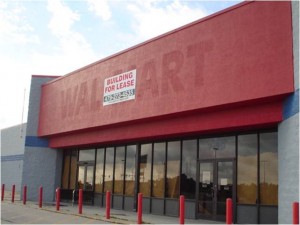By Doug Stephens
If we’ve learned anything from the advent of online social networks, it’s that ordinary people can be quickly organized around a common idea, cause or event more effectively than ever before. Whether it’s to monitor urban polling stations during elections, aid earthquake victims or simply flash-mob on a city street corner, our ability to rally people, for any purpose, is unprecedented, which raises an ominous question for retail.
If it’s that simple to coordinate attention, interest and effort, how difficult could it be to harness consumer buying power?
It’s also become abundantly clear is that our need for middle-men is quickly diminishing. Disintermediation is occurring all around us – in music, publishing and even advertising – so why not retail?
The Groupon Incident
August 19th, 2010 may go down in retail history as the day the game changed. It was on this otherwise uneventful day, that an estimated half-million people jumped on an unexpected GAP promotion offered through online deal-maker Groupon, crashing Groupon’s server in the process and shocking the retail world. And while the lead story understandably touted this as a win for the retailer, the real wake-up call had more to do with the power of the consumer and the ease with which so many of them could have their collective buying power amassed so quickly.
Beyond Coupons
The idea of consumers coming together to combine their purchasing power is not new. As early as 2006 we heard reports out of China of hoards of consumers coordinating online and descending on retailers at a specific time to essentially extort discounts from them. But as social networks become increasingly ubiquitous and sophisticated, the ability for consumers to coordinate their respective needs and organize in an effective way is clearly a reality, especially on major purchases such as appliances, electronics or automobiles, where the savings can be significant. And to be clear, I am not referring to the kind of direct-buying clubs often seen on television which are really only a slightly different layer of retail distribution. Rather I’m talking about one hundred percent, consumer generated buying groups – by the people for the people so to speak.
For example, suppose 500,000 consumers wishing to buy appliances come together within a social buying network. And of those, the 200,000 wanting refrigerators form a sub-group. And within the sub-group, the 10,000 consumers wanting a Sub-Zero model 123 form a buying group and make a direct offer to the manufacturer for all 10,000 units. What manufacturer could simply walk away from an offer like that, especially when there’s 100 percent retail markup in their pocket to play with?
What’s particularly worrisome for retailers is that this social buying group could have more collective purchasing clout than they do!
Why Retail in the First Place?
A Retailer’s value used to be in their ability to amass selected assortments of goods that consumers would otherwise have little or no access to. Secondly, they displayed the products in a way that made selection less time consuming. Lastly, they supported the assortment with valuable product knowledge – knowledge that was unavailable to consumers. In other words, the Retailer added real, tangible value to the product in the process of selling it to the consumer. They earned their cut.
However, given the access to information that today’s Consumer has, this value is increasingly being diminished. To an ever -growing extent, the consumer doesn’t need the retailer. After all, how do you adequately serve a consumer who knows more about your products than you do? From the Consumer’s point of view many stores have become little more than expensive ship-to points.
The Key to Survival
Retailers that do manage to survive the inevitability of consumer-direct buying will be those who firmly re-establish their added value. Beyond product, price or promotion, they will deliver something unique, difficult to replicate and above all, something of real worth to the consumer. They’ll deliver an experience. An experience that’s well worth the mark-up.

